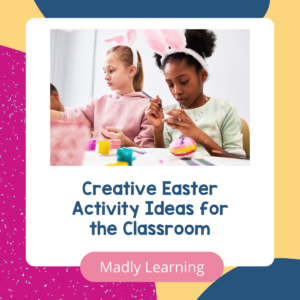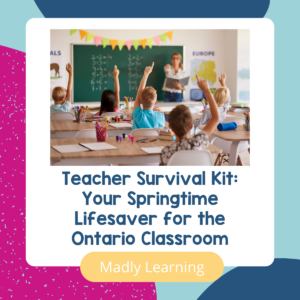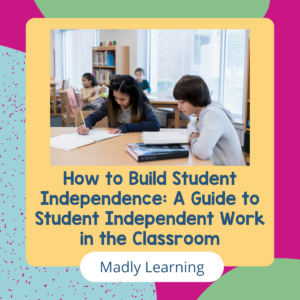As teachers, we often find ourselves at a crossroads between professional aspirations and personal fulfillment. The ever-changing landscape of education demands not just our skills but also our emotional and mental bandwidth. In this blog post, we dive into essential mindset strategies that can redefine not only our approach to teaching but also how we balance our professional and personal lives. Are you ready to find a better teaching work life balance?

Embracing Change for a Better Teaching Work Life Balance
If you had asked me years ago where I saw my teaching career going, my answer would’ve been very different from where I am today. Like many of you, my journey has been one of self-discovery, challenging the traditional pathways and embracing new directions. This process has been about understanding and realigning my priorities, which now includes running a successful business and being a part-time teacher and a full-time parent. I have final found a way to have a better teaching work life balance.
Finding Your ‘Why’
In the heart of every teacher lies a ‘why’ – that intrinsic motivation that pulls you into the classroom each day. For me, it’s the joy of delivering lessons, connecting with students, and the tangible impact of these relationships. Recognizing your ‘why’ is crucial; it’s your compass in the vast sea of educational challenges.
Implementation Plan:
- Reflect on joyful classroom moments.
- Write down your core reason for being a teacher.
- Remind yourself of this purpose daily.
Banishing the Imposter Syndrome
It’s common to feel overwhelmed and underqualified in the world of teaching. The key lies in owning your unique strengths and embracing the areas where we can grow. A mindset shift towards measuring success not by an idealized standard but by personal growth can be transformative.
Implementation Plan:
- Identify and affirm your teaching strengths.
- Celebrate your achievements, big or small.
- Let go of the need for external validation.
The Power of “No”
In a profession that often asks more than it gives, learning to say “no” is a powerful tool. It’s about understanding your limits and aligning your tasks with your core values as an educator.
Implementation Plan:
- Evaluate your current obligations.
- Practice saying “no” to non-priority tasks.
- Develop a polite but firm way to decline additional responsibilities.
The Art of Improvisation
Flexibility and the ability to improvise are underrated skills in teaching. Sometimes, the best lessons are those that deviate from the plan, driven by student curiosity and spontaneous learning opportunities.
Implementation Plan:
- Focus on objectives over detailed plans.
- Be attentive to student interests.
- Embrace deviations that lead to genuine learning moments.
Ruling Your Realm
Taking control of your teaching environment means setting clear boundaries and communicating them assertively. It’s about making informed decisions without constantly seeking external validation.
Implementation Plan:
- Establish clear personal and classroom boundaries.
- Practice assertive communication.
- Consistently enforce your rules with empathy and authority.
Sustainable Teaching
Teaching is a marathon, not a sprint. Embracing a sustainable approach to teaching means setting boundaries, prioritizing self-care, and understanding the importance of investing in resources that save time and energy.
Implementation Plan:
- Set non-negotiable downtime.
- Incorporate mindful practices into your routine.
- Invest in resources that ease your workload.
Cultivating Resilience
Building resilience is about creating emotional boundaries to protect yourself while remaining open to constructive feedback. It’s understanding that you cannot control everything and focusing on what you can influence.
Implementation Plan:
- Reflect on past experiences for growth.
- Engage in positive self-talk.
- Focus on constructive feedback, letting go of negativity.
Rekindling the Joy of Teaching
Rediscover the fun in teaching. Incorporate play, creativity, and passion back into your classroom. Remember, teaching is not just about ticking boxes on a curriculum; it’s about making learning enjoyable and meaningful.
Implementation Plan:
- Introduce fun, engaging activities regularly.
- Collaborate with students to find enjoyable learning methods.
- Reflect on and cherish joyful teaching moments.
Watch It On YouTube
Changing your mindset in teaching doesn’t require monumental shifts. It’s about small, consistent steps that gradually reshape your approach to teaching and life. Embrace one strategy at a time and watch how it positively transforms your teaching experience and teaching work life balance.
Remember, every small step counts in this journey of teaching and self-discovery. Until next time, keep the flame of learning burning bright!






